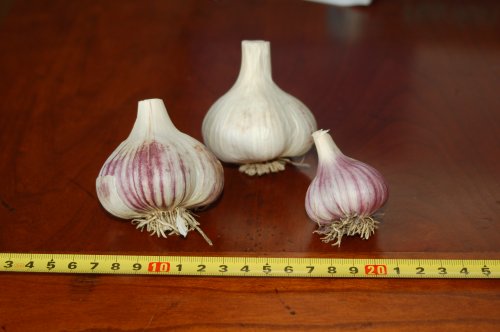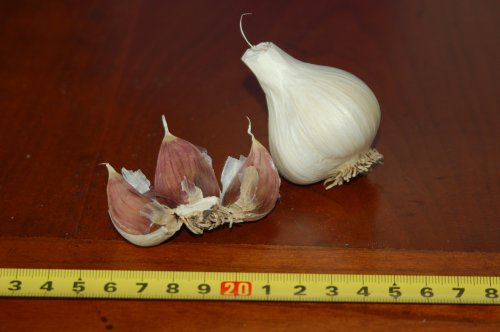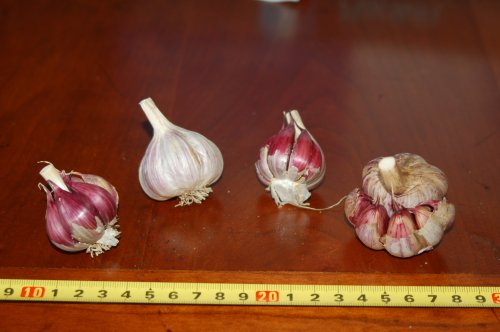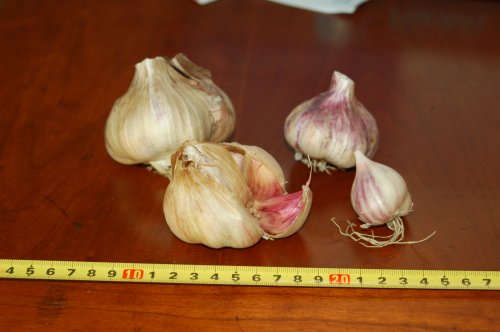In recent posts on garlic I have made reference to ‘types’ of garlic. Current thinking is there are 10 garlic types or sub-types, and are as follows:
Rocambole: This is a hardneck, generally with more complex flavors than other softnecks. Storage life is less than average. Cloves are usually large and easy to peel.
Porcelain: Hardneck, normally with excellent flavor. Storage is usually a little longer than that of Rocamboles. Tightly wrapped cloves can be a little difficult to peel. Normally large bulbs and plants. Yield is sometimes below average.
Purple Stripe: This is similar to Rocambole, except for for purple coloring on the skin and cloves, as well as usually have more and smaller cloves. This type usually has a very nice flavor when cooked.
Marbled Purple Stripe: A sub-type of Purple stripe, with slightly different color patterns.
Glazed Purple Stripe: A sub-type of Purple stripe, with slightly different color patterns.
Artichoke: Artichokes are probably the most common softneck garlic. The plants often form bulbils, but not usually in a scape on top, but rather on the bottom of the stem or on top of the bulb. Under some growing conditions, these plants can produce a hardneck. Usually milder flavor, and often better tasting raw.
Asiatic: This type is very closely related to Artichoke, and is usually considered a sub-type. This type of garlic often has a striped skin. Bulbs often open in the ground before harvest. This type forms a long scape.
Asiatic Turban: This is a sub-type of Asiatic, often with a very short storage life.
Silverskin: This type is one of the most productive with the longest storage life, making it a very common commercial variety. Often the taste is below average.
Creole: This is a sub-type of Silverskin, often with red bulbs. This is a warm climate garlic, that normally does poorly when grown far from the equator.





